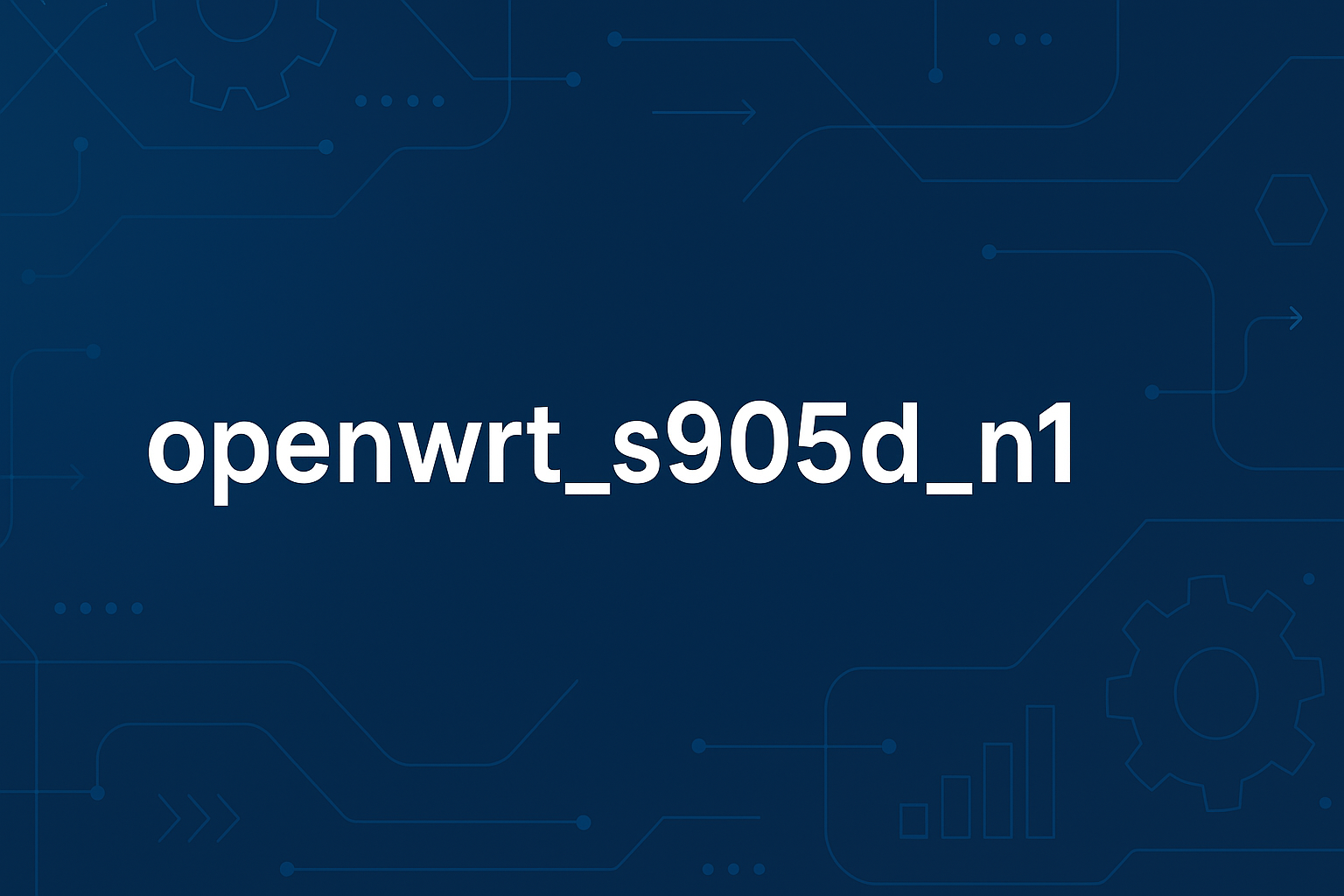The term openwrt_s905d_n1 has become popular in the tech community among enthusiasts who enjoy repurposing affordable hardware for high-performance networking tasks. By combining the open-source OpenWrt firmware with the Amlogic S905D-based N1 TV box, users can transform an inexpensive device originally designed for media streaming into a powerful, multi-functional router or server.
In a world where networking hardware can be costly and sometimes limited in functionality, the openwrt_s905d_n1 solution offers flexibility, cost savings, and a vibrant community-driven ecosystem. Whether you want to enhance your home network, build a NAS, or set up advanced services like VPNs, this combination is an attractive option.
What is OpenWrt?
OpenWrt is a Linux-based operating system built specifically for embedded devices. Unlike traditional router firmware, it is fully customizable and supports thousands of software packages. With OpenWrt, users can extend the capabilities of their networking devices well beyond what stock firmware typically allows. Some key advantages of OpenWrt include:
-
A powerful package manager for installing software
-
Advanced networking features such as VLANs, QoS, and firewall rules
-
Wide community support with constant updates and security patches
-
Compatibility with a variety of hardware devices
When paired with the S905D N1 hardware, OpenWrt provides a complete, scalable, and versatile networking solution.
The Hardware: S905D N1
The S905D N1 is a TV box powered by the Amlogic S905D chipset. While originally built for video playback and streaming, the device has characteristics that make it suitable for networking projects:
-
CPU: Quad-core Cortex-A53 offering solid processing power
-
GPU: Mali-450 for multimedia, though not critical for OpenWrt use
-
RAM: Typically 2GB DDR3, enough for routing and server tasks
-
Connectivity: Gigabit Ethernet, USB ports, and HDMI output
These specifications may not compete with enterprise routers, but they are more than enough for home networks or small office setups. The presence of Gigabit Ethernet and sufficient RAM makes it a hidden gem for DIY enthusiasts.
Why Choose openwrt_s905d_n1?
One of the most compelling reasons for using openwrt_s905d_n1 is cost efficiency. Instead of purchasing an expensive commercial router with limited upgrade options, you can repurpose an N1 box and unlock enterprise-level features using free and open-source firmware. Other benefits include:
-
Performance: Capable of handling heavy routing tasks, VPN encryption, and more.
-
Flexibility: Install packages for file sharing, ad-blocking, proxy servers, or IoT management.
-
Community Builds: Many developers provide optimized builds specifically for the N1 device.
-
Sustainability: Repurposing old hardware reduces e-waste and promotes eco-friendly use.
For tech-savvy users, this setup offers a sense of control and customization not found in off-the-shelf solutions.
Common Use Cases for openwrt_s905d_n1
The openwrt_s905d_n1 setup can serve multiple roles in a home or office network. Some of the most common applications include:
Home Router Replacement
With OpenWrt installed, the N1 box becomes a robust router capable of handling multiple connections, bandwidth allocation, and firewall customization. This makes it a perfect replacement for ISP-provided routers, which often come with limited features.
NAS (Network-Attached Storage)
By connecting external storage via USB, the device can be transformed into a mini-NAS. With packages like Samba or NFS, you can easily share files across your network, stream media, or back up important data.
VPN and Proxy Server
Privacy-conscious users can install OpenVPN or WireGuard to secure their internet connections. This allows encrypted browsing, bypassing geo-restrictions, and safe remote access to your network.
Ad-Blocking Gateway
Installing software like AdGuard Home or Pi-hole turns the openwrt_s905d_n1 device into a network-wide ad-blocker, improving browsing speed and privacy across all connected devices.
IoT Device Hub
Smart home enthusiasts can use the N1 with OpenWrt to manage and secure IoT devices, ensuring better performance and tighter control of connected gadgets.
Installation Process
Setting up openwrt_s905d_n1 involves several steps, but once complete, it opens the door to endless possibilities.
-
Download Firmware
Locate the latest community build of OpenWrt specifically designed for the S905D N1 hardware. These builds are usually shared in forums and developer repositories. -
Prepare the Boot Media
Use a tool like BalenaEtcher to flash the firmware onto an SD card or USB drive. -
Boot the Device
Insert the boot media and power up the N1 box. In most cases, it will detect the image and boot into OpenWrt. -
Initial Configuration
Access the device via a web browser or SSH to configure network settings. Set up your LAN, WAN, and secure login credentials. -
Install Packages
Use the package manager to add essential services such as Samba for file sharing, WireGuard for VPN, or Docker for containerized applications. -
Optimize Performance
Fine-tune settings like QoS, firewall rules, and system monitoring to ensure stable and secure performance.
Performance and Reliability
The openwrt_s905d_n1 combination offers surprising reliability given its modest hardware origins. Tests by the community have shown that the N1 can handle gigabit traffic, multiple VPN tunnels, and heavy routing loads without significant slowdowns. While not suitable for very large enterprises, it excels in home and small office environments.
Reliability is further enhanced by OpenWrt’s stability and frequent updates. Security patches are released regularly, ensuring that your device remains safe from emerging threats.
Challenges and Limitations
Despite its many advantages, openwrt_s905d_n1 is not without limitations. Some potential challenges include:
-
Learning Curve: New users may find installation and setup technical.
-
Community Support: Official support is limited, so you rely on forums and community developers.
-
Hardware Constraints: While powerful for its class, the N1 cannot match enterprise-grade hardware in raw throughput.
These limitations, however, are often outweighed by the benefits for those who enjoy hands-on tech projects.
Future of openwrt_s905d_n1
As open-source communities continue to evolve, the future looks promising for openwrt_s905d_n1. Developers frequently release new firmware builds with optimizations, security patches, and expanded functionality. Furthermore, the growing popularity of repurposing consumer hardware ensures that guides, tutorials, and troubleshooting resources will remain widely available.
Read also: oneworldplate .com – Exploring Global Flavors and Cultural Connections Through Food
Conclusion
The openwrt_s905d_n1 project highlights the power of open-source software combined with affordable hardware. By unlocking the potential of the S905D N1 TV box, users gain access to a flexible, cost-effective, and feature-rich networking solution. Whether you want a reliable home router, a secure VPN server, or a NAS for personal storage, this setup offers remarkable possibilities.
For technology enthusiasts, openwrt_s905d_n1 is more than just a project—it is a pathway to greater control, customization, and creativity in networking.


